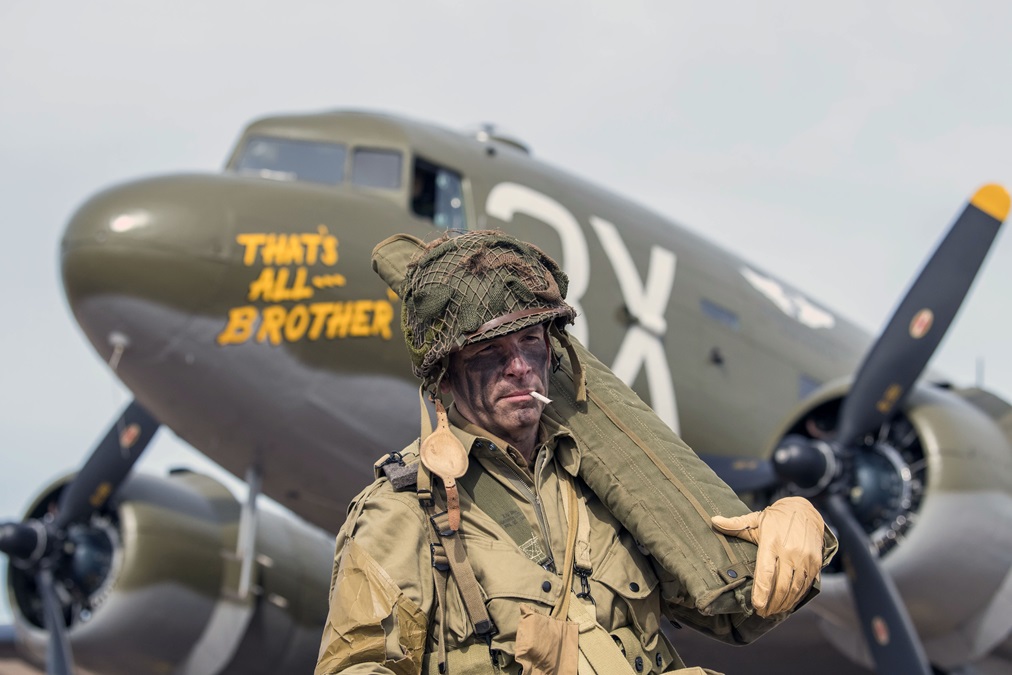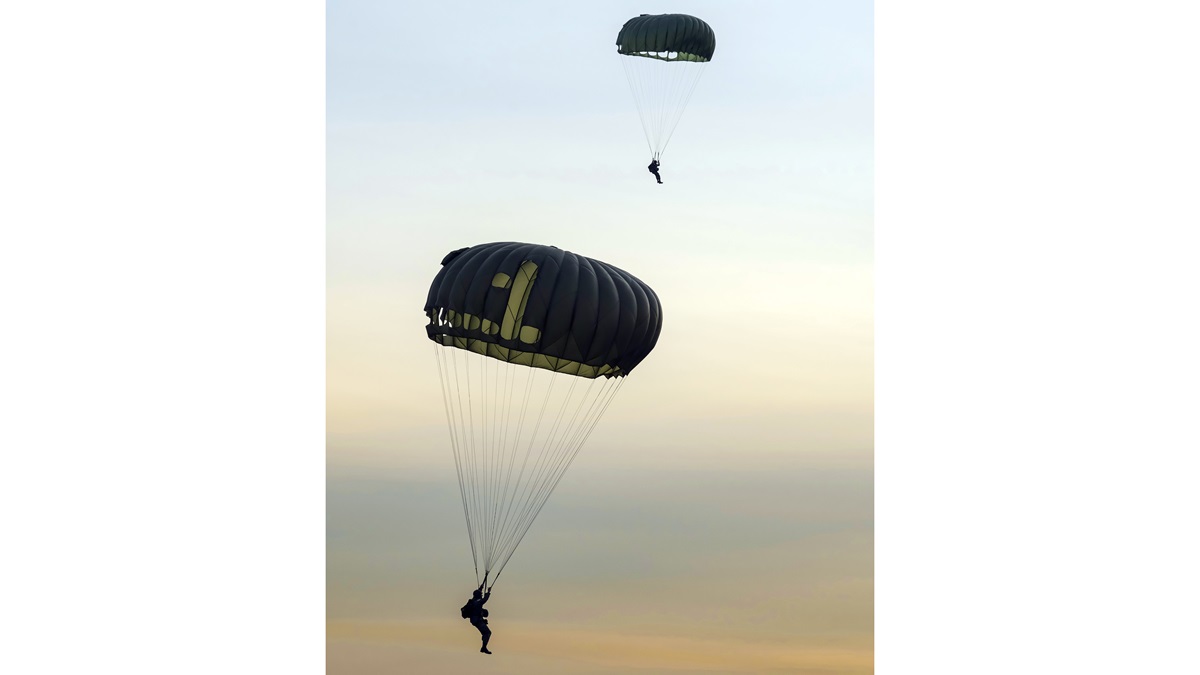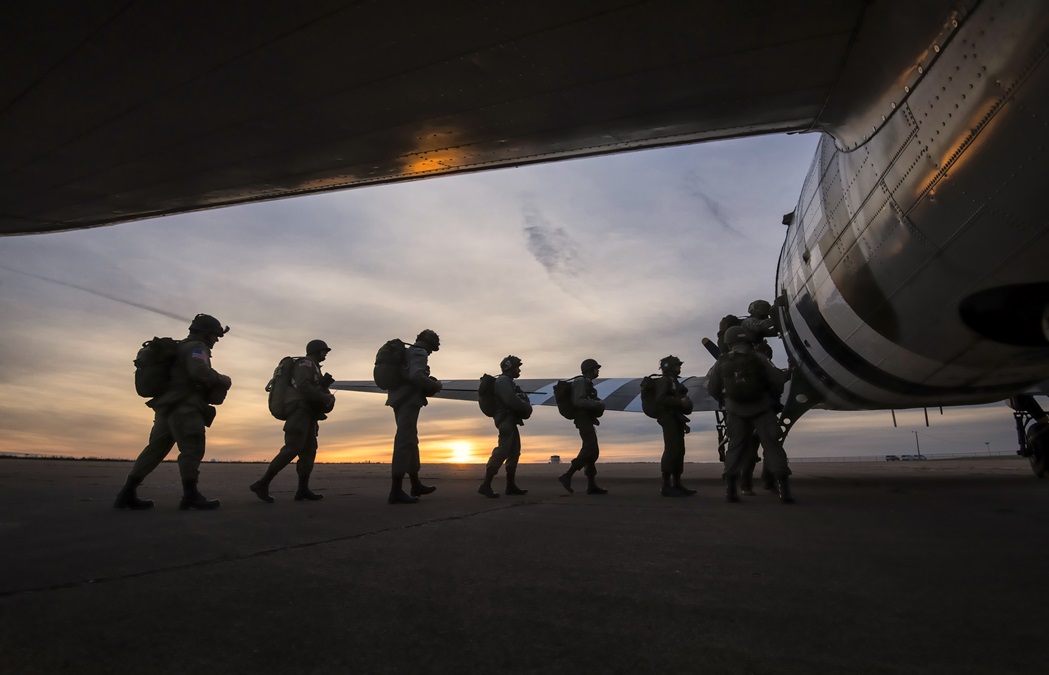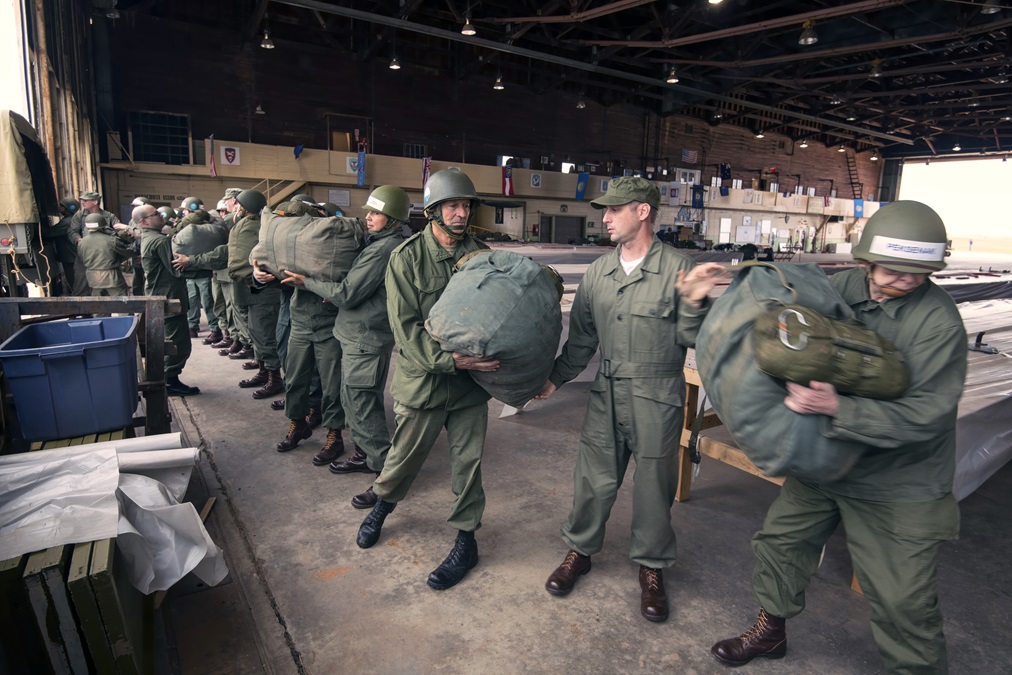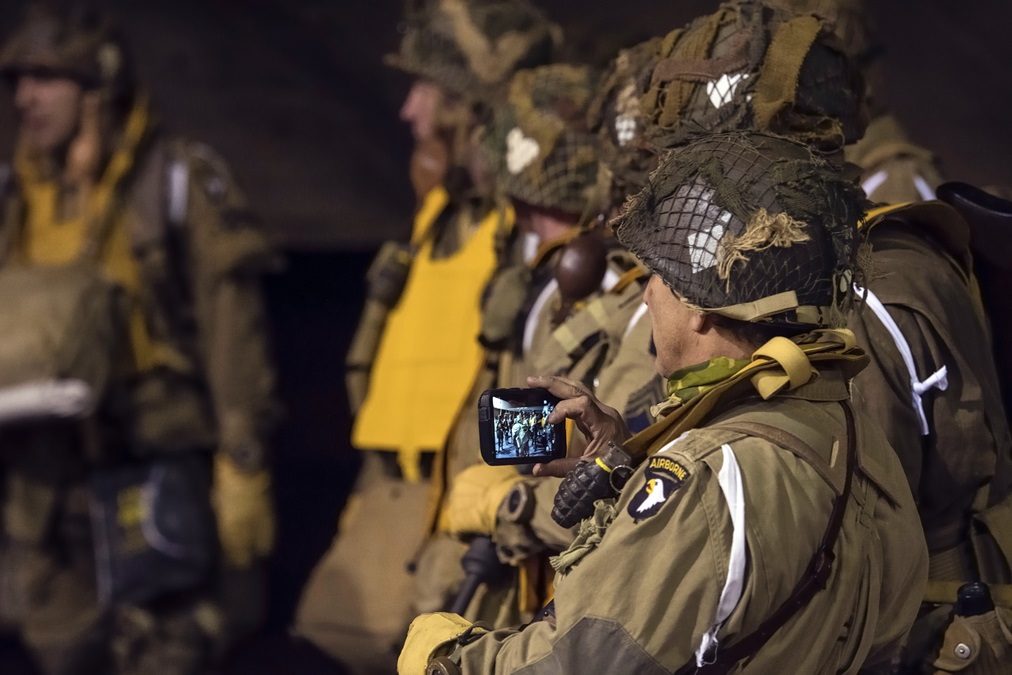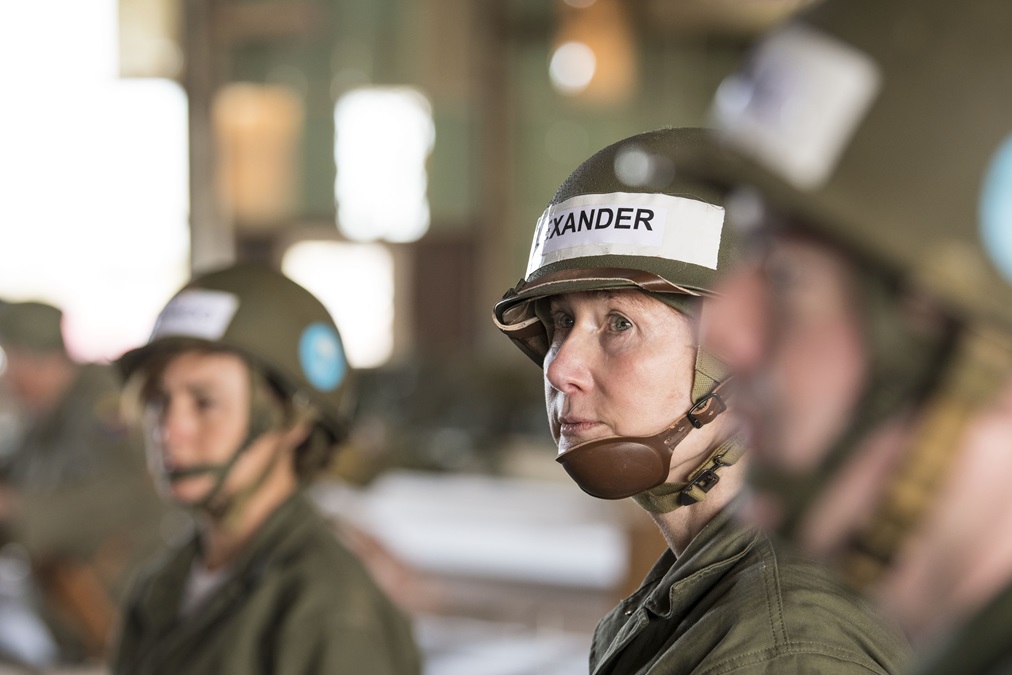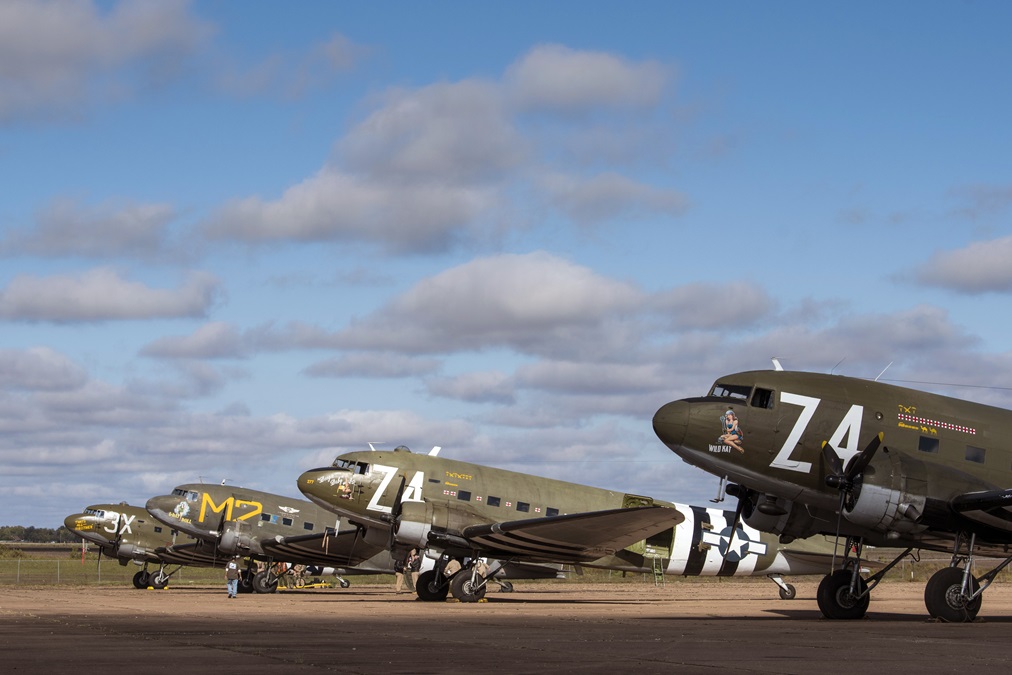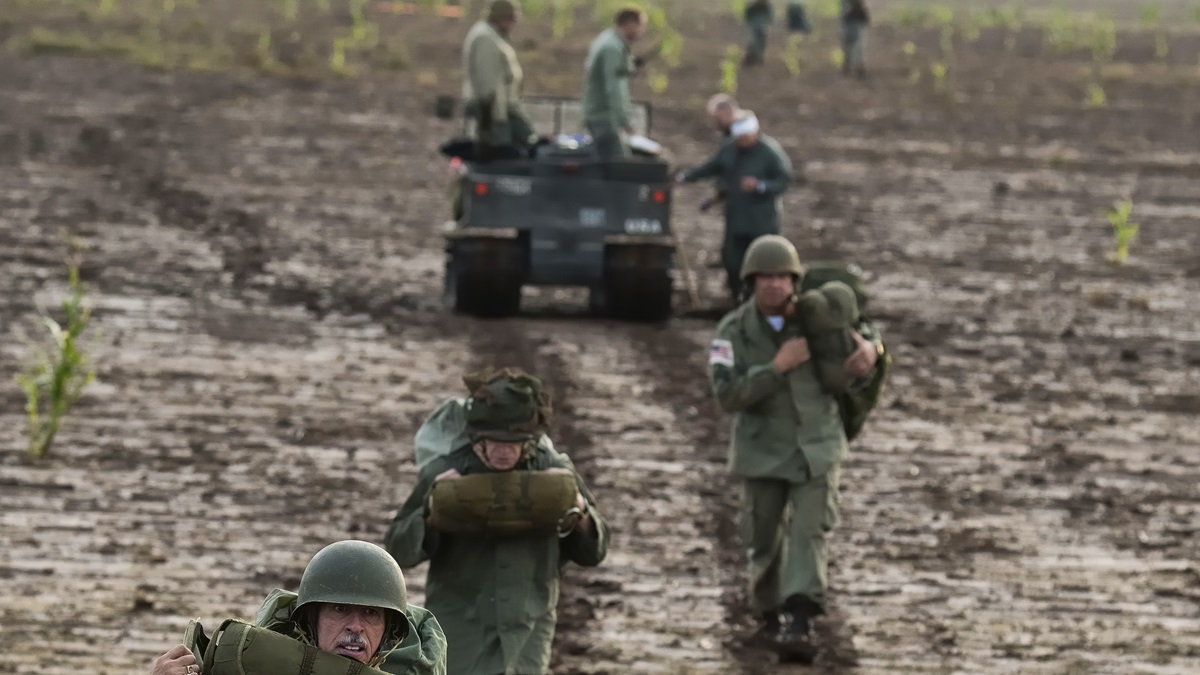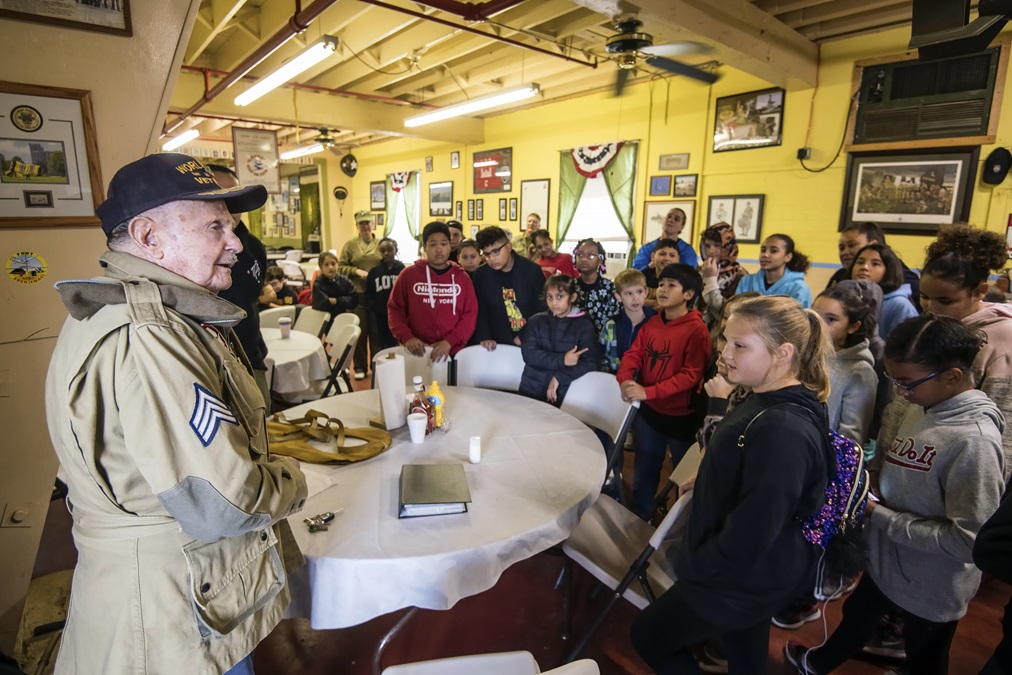Re-living history
Team continues World War II’s Airborne mission
There was a significant difference between these classes, however. Most of the men undergoing this training in 1943 had been drafted, and had little say in the matter. Students learning the same techniques in 2018 were there by choice, paying for the privilege.
Members of the World War II Airborne Demonstration Team (ADT) come from a wide variety of backgrounds, for equally varied reasons.
“I missed jumping,” said Bo Hill, 70, of Fayetteville, Georgia. In the U.S. Army he qualified in Airborne, Special Forces, and as a Ranger—then transferred to Army aviation. Hill served as a ground controller for AC–130 gunships in Vietnam, and flew Huey and Cobra helicopters. “When I came here, I hadn’t jumped in 39 years. And I was not the oldest guy.” Because of his prior military experience he could have opted for an accelerated class, but he was glad he chose the week-long school.
Today Hill has more than 100 jumps with ADT. He jumped into Normandy in 2012, and plans to jump again in 2019. During the October 2018 jump school, he was the second person to jump out of the Douglas C–47 that led the D-Day invasion fleet—That’s All, Brother—since its recent restoration by the Commemorative Air Force. “I never thought I’d jump from That’s All, Brother,” he said. “That’s All, Brother is a national treasure.”
The restored C–47 is based in San Marcos, Texas. It and two other CAF ships, D-Day veteran D-Day Doll from Riverside, California, and the similar Navy R4D Ready 4 Duty from Lancaster, Texas, flew to Oklahoma to practice formation flight during ADT’s jump school. That’s All, Brother and D-Day Doll are slated to fly to Europe this summer for the seventy-fifth anniversary.
Rodney Roycroft of Pensacola, Florida, was in Normandy with his family for the sixtieth anniversary of D-Day and saw ADT jump; he thought they were active duty members of the U.S. Army 82nd Airborne Division. “I’ve been a World War II history nut all my life. When I found out I could do this, I had to come out here and try,” he said. “I had never jumped in my life.”
The former U.S. Navy pilot and current Delta Air Lines international first officer completed ADT’s jump school in 2005. Today he’s a senior jumpmaster, master jumpmaster, and ADT’s officer in charge of the 2019 Normandy trip. Roycroft has made 162 jumps. “If I hadn’t become a jumpmaster, I’d probably have 300,” he said, laughing.
ADT uses the MC1-1C parachute, once a primary military chute and now used for some Special Forces missions. These round parachutes are similar in appearance to World War II parachutes, but they can be steered. “These are a larger diameter so you come down a little more slowly,” Roycroft explained. “It’s such an honor and a privilege to show today’s world what that world looked like.”
When Kat Healey’s brother went through ADT’s jump school in 2008, women weren’t allowed. Healey, 46, of Morristown, New Jersey, was born on June 6—D-Day. “That spurred my interest in World War II. I have passion for this. I have passion for the veterans.” She was accepted for the July 2014 class and now has 134 jumps; she was the first female to earn her senior (50 jumps) and master wings (100 jumps).
How? OSS. During the war, the Office of Strategic Services—a U.S. intelligence agency that was a precursor to today’s Central Intelligence Agency—trained female agents to jump behind enemy lines to help the resistance. Women jumped in coverall jumpsuits over French peasant dresses; after landing, the OSS agent would remove her jumpsuit and slip into the local population. “Little girls go to the airshows, too,” Healey said. “So many times I’ve heard a mother say, ‘Look, there’s a girl!’ I feel I can be an inspiration. They need to know they can do that, too.”
Kaitlin Harriott, 22, of Silverwood, Colorado, first came to jump school with her dad, an active World War II reenactor, when she was 17 and too young to participate. In January 2014, at 18, she completed jump school before graduating from high school. “My friends thought it was weird,” she said. “Nobody that age understands anything about World War II.”
Today Harriott is an ADT instructor, teaching proper parachute landing falls in a sand pit. Other phases of training include suspended harness, where students develop muscle memory for various emergency procedures, and mock door training where exiting the aircraft is drilled.
Jacob Stottlemyer of Bunker Hill, West Virginia, said his first jump was “sensory overload, seeing the first couple of people go out in front of you. And it was a vacuum noise, like something getting sucked up in a vacuum cleaner, whenever anyone went out the door. Then it was my turn.” He earned his wings after five jumps, and has jumped two times with ADT since then. “I enjoy the camaraderie. It’s just like when I was in the Army,” said the former cavalry scout.
“I’m proud to be a part of the team, and to meet the veterans that I’ve met,” Stottlemyer added. When he jumped in Virginia in December, he met Norwood Thomas, a 101st Airborne Division veteran who jumped into Normandy on D-Day. “Norwood was saying it was a great honor to meet us, but really, it was an honor for us to meet him.”
C.J. Machado said her first jump was “terrifying. It’s a lot of pressure, and your life depends on making a proper exit” from the aircraft, she said. “On the first jump you don’t know what to expect, because you’ve never done it.” Each jump got easier for her, however, even though her suspension lines tangled each time—something she attributes to her light weight and exit technique. Tangled lines are one of many potential issues jumpers are taught to resolve, in this case by cycling your legs as if you’re pedaling a bicycle.
A photojournalist from San Diego documenting the program, Machado said the training was excellent—and intense. “We had to learn a tremendous amount of information in a limited amount of time,” she explained. “The instructors were determined and dedicated to helping us succeed.”
The high point for her? After completing five jumps, World War II paratrooper Vince Speranza—who served in the 101st and fought in Bastogne, Belgium—pinned on Machado’s ADT jump wings. “That was the biggest honor of my life,” she said.
Jumpers usually parachute from one of ADT’s two C–47s. Brad O’Connor retired from the Air Force after 27 years of flying jets, including the F–111 and F–117, and he still teaches in the Northrop T–38. “After retirement the Cessna wasn’t going to do it for me, so I joined ADT as a C–47 pilot. Over many, many years I worked my way into the left seat, and now I’m training officer for the group.” His C–47 checkride took a year and a half, thanks to two engine failures.
“This is just an entirely different animal. Not only in size—the fact that it’s a taildragger with big radial engines out there. The technology is 1935 technology,” he said. “When the jumpers go out, it’s impressive as all get-out. You feel it in the controls. The rudder will kick off to the side a bit; you feel the tail go up and down as the weight shifts. When every jumper goes out the door, you can feel the pressure change in the airplane as they block that wind.”
O’Connor loves the mission. “It’s a great way to honor the veterans. When I first joined, there were still a dozen World War II veterans who would come out for the entire week, and they’d tell these amazing stories,” he said. “Now we’re carrying on that heritage.”
Army artillery veteran Kevin Ouellette of Frederick, Oklahoma, completed jump school in January 2015. “Something like this will draw you in. How can you not be involved? And you meet some amazing guys and gals,” he said. “The mission statement is a great one: ‘Remember, honor, serve.’” Ouellette said the airport was built during World War II for multiengine training, using Cessna AT–17 Bobcats.
ADT even has its own chaplain. Robert “Padre” Starr, 71, of Racine, Wisconsin, became a deacon in the Catholic church in 2003 and first visited ADT in 2012. “It’s helped me to grow in an ecumenical community, and bring out the spiritual basis,” he said. “It’s a great place. The camaraderie is wonderful.”
Raymond Steely of Chandler, Oklahoma, had retired from the U.S. Army as a colonel after serving 38 years in Special Forces when a friend asked if he would like to again jump from a military aircraft, using a military parachute. Steely hadn’t jumped in 18 years. “It was so exciting, so exhilarating to step out of that World War II aircraft, in the footsteps of so many World War II veterans—and some that didn’t come home,” he said. “It was awe-inspiring.”
That was 10 years ago. Today he’s ADT’s chief of staff, coordinating operations and adherence to ADT’s mission: to remember those who fought and died to preserve America’s freedom; to honor the memory of those who gave their lives, as well as those who survived; and to serve by entertaining and informing the public of the sacrifices made by America’s warriors.
Why? For veterans like the late Bobby Hunter. In 2009 Hunter accompanied ADT to Europe for the sixty-fifth anniversary of D-Day and Operation Market Garden and on a battlefield he would pause, look around, then slowly walk again. Finally he stopped, then said, “That’s it. That was my foxhole.” He vividly described the first enemy soldiers he shot, Steely recalled. “[His son] Robert leaned over to me and said, ‘Dad’s never told me that.’ So many of these stories, that they could share with us, die with them.”
Email [email protected]
ADT has been based at its World War II-era facility in Frederick, Oklahoma, since 2005. Jump schools are held each April, July, and October. For more information about the organization, visit the website.

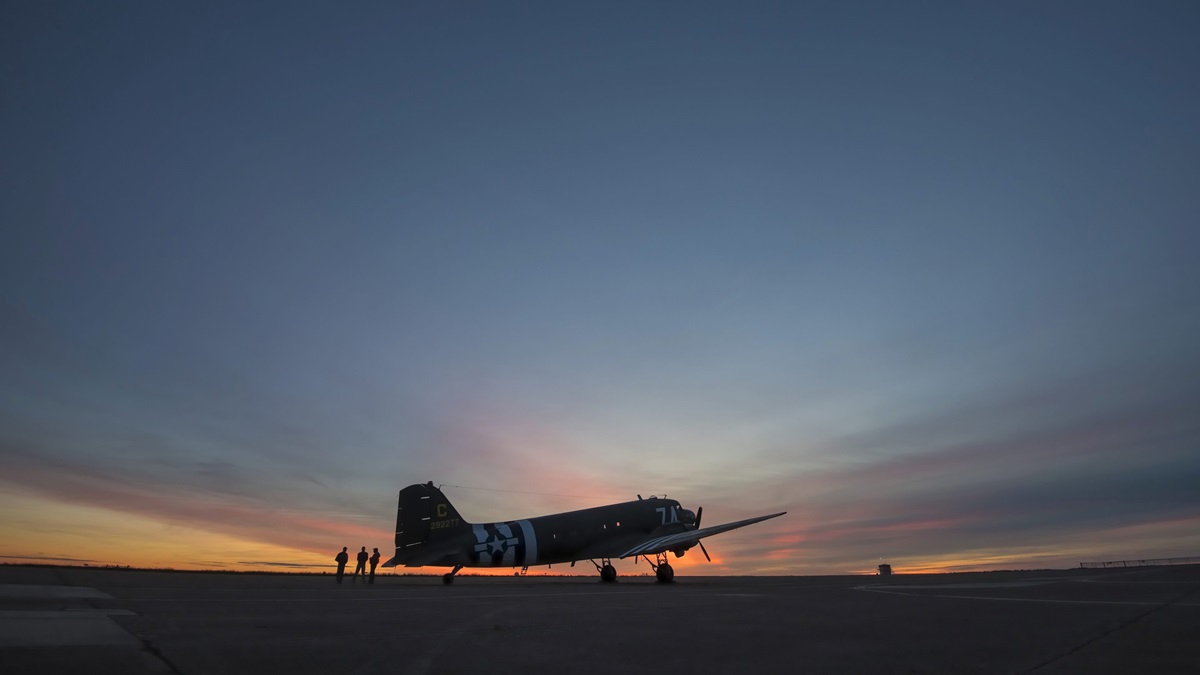
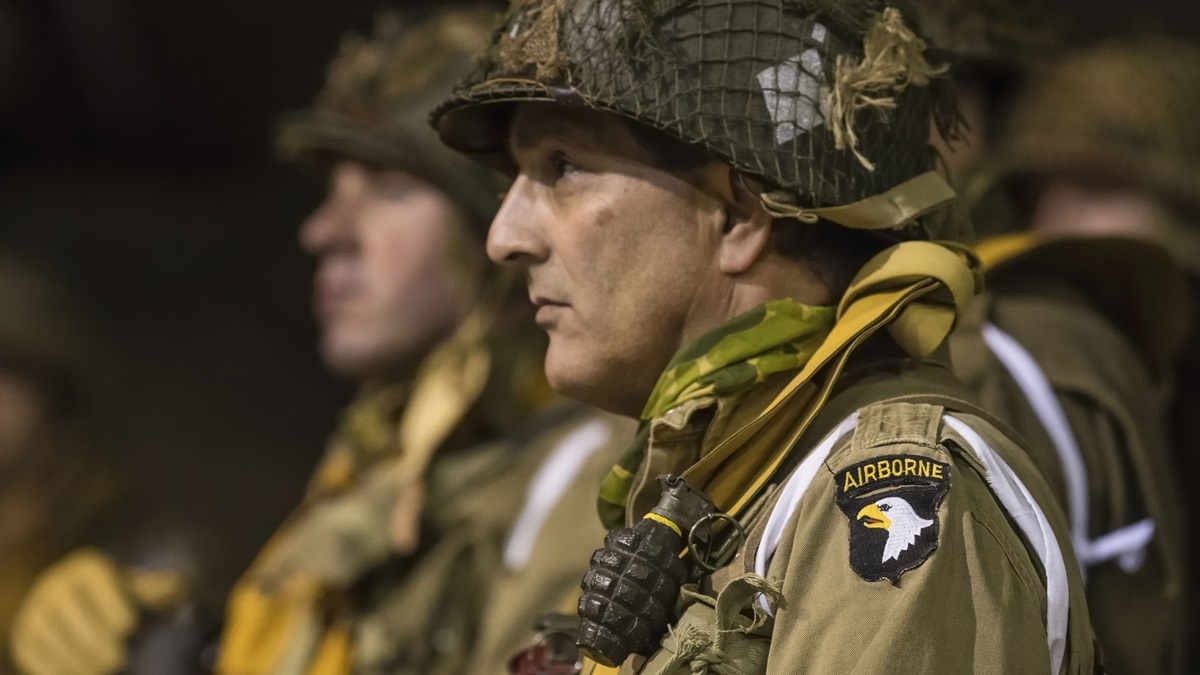
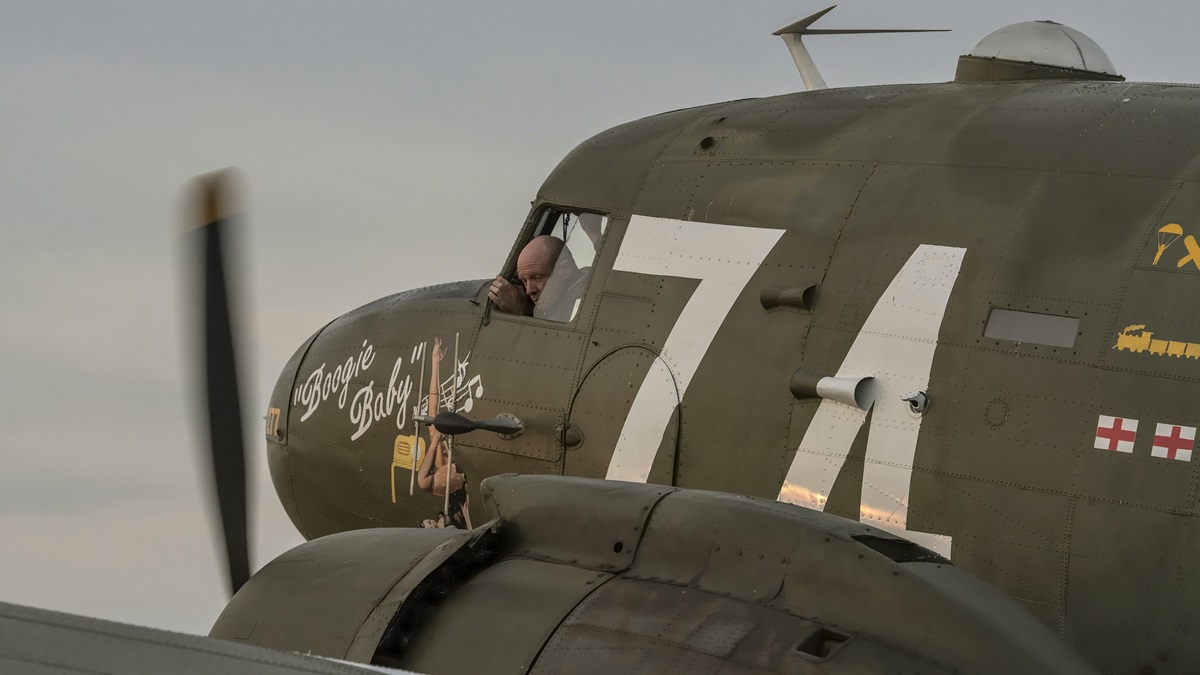
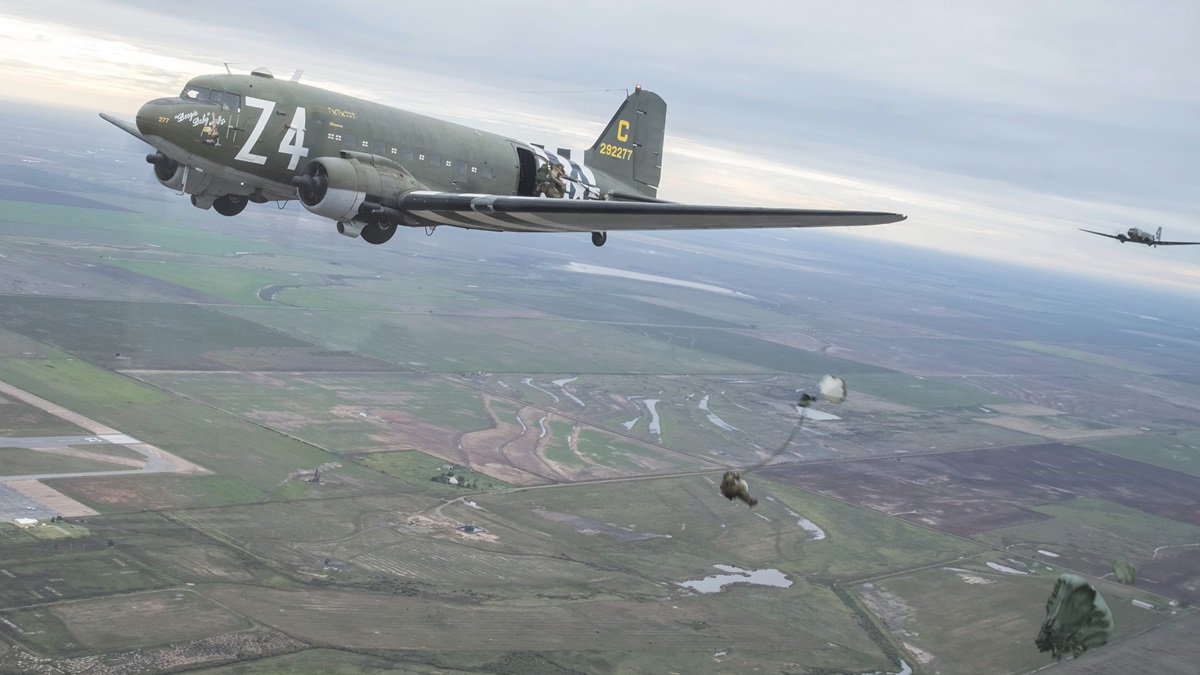
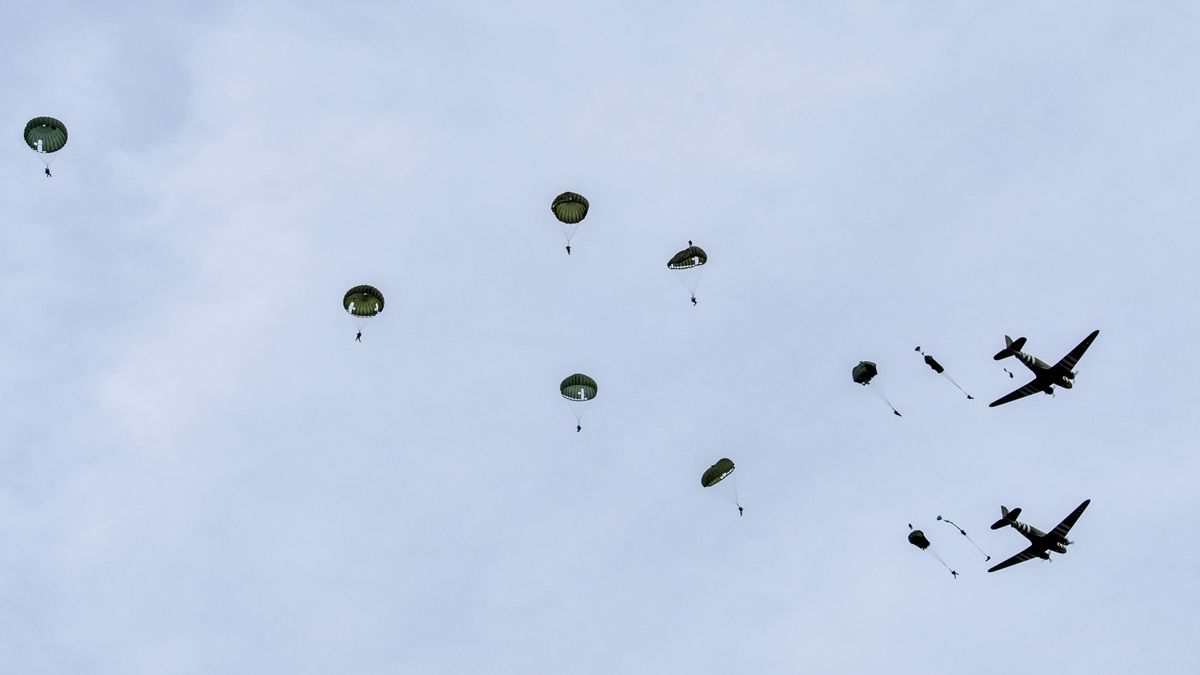
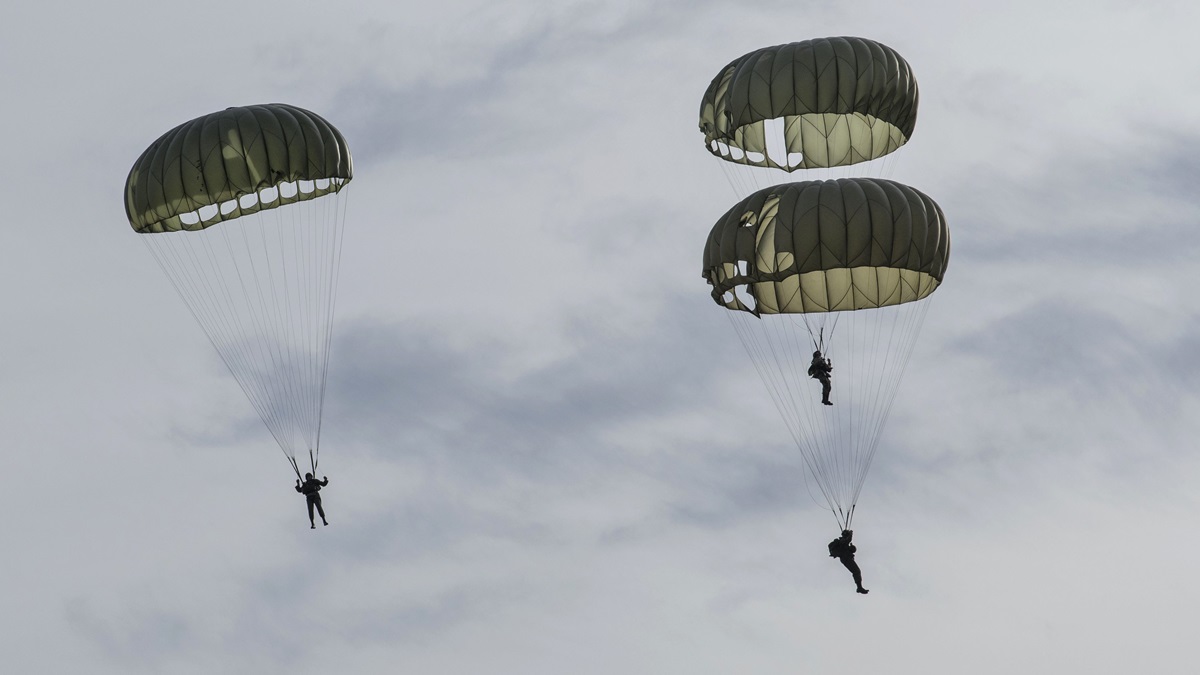
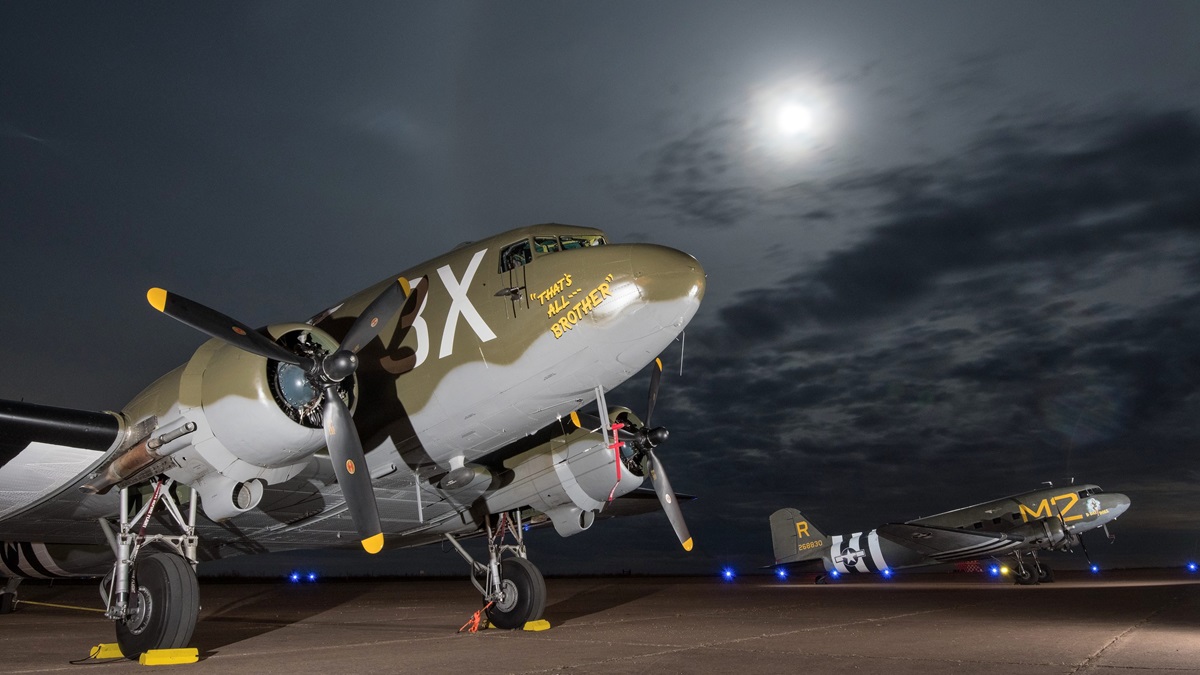
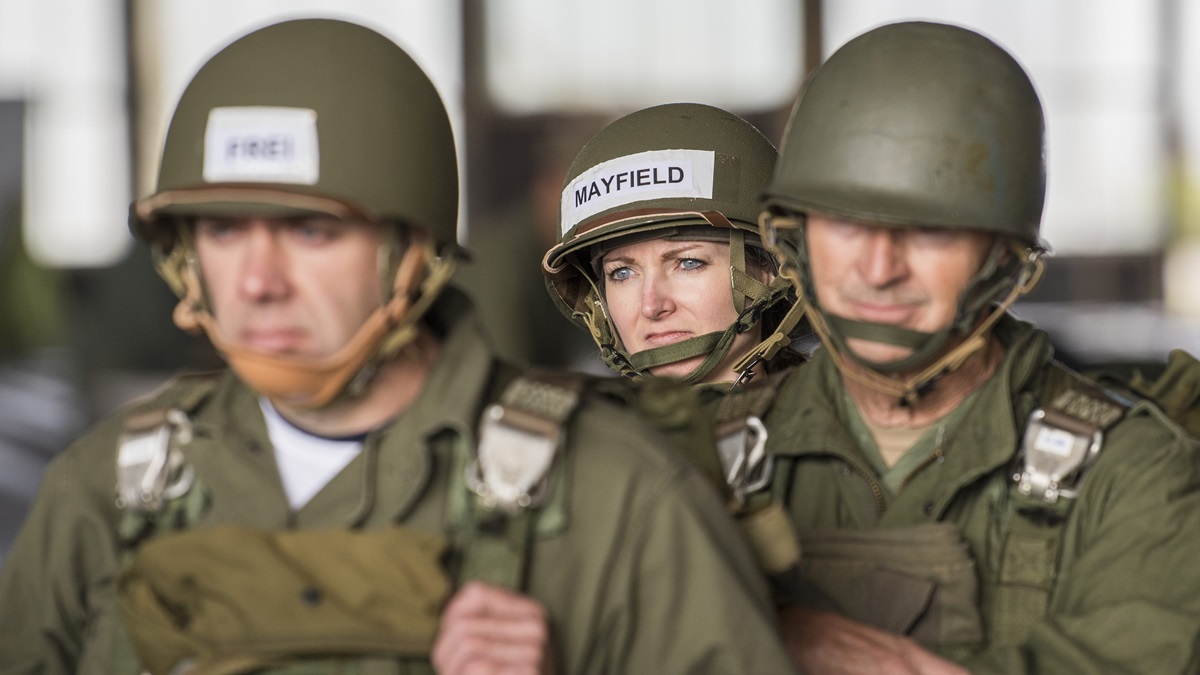
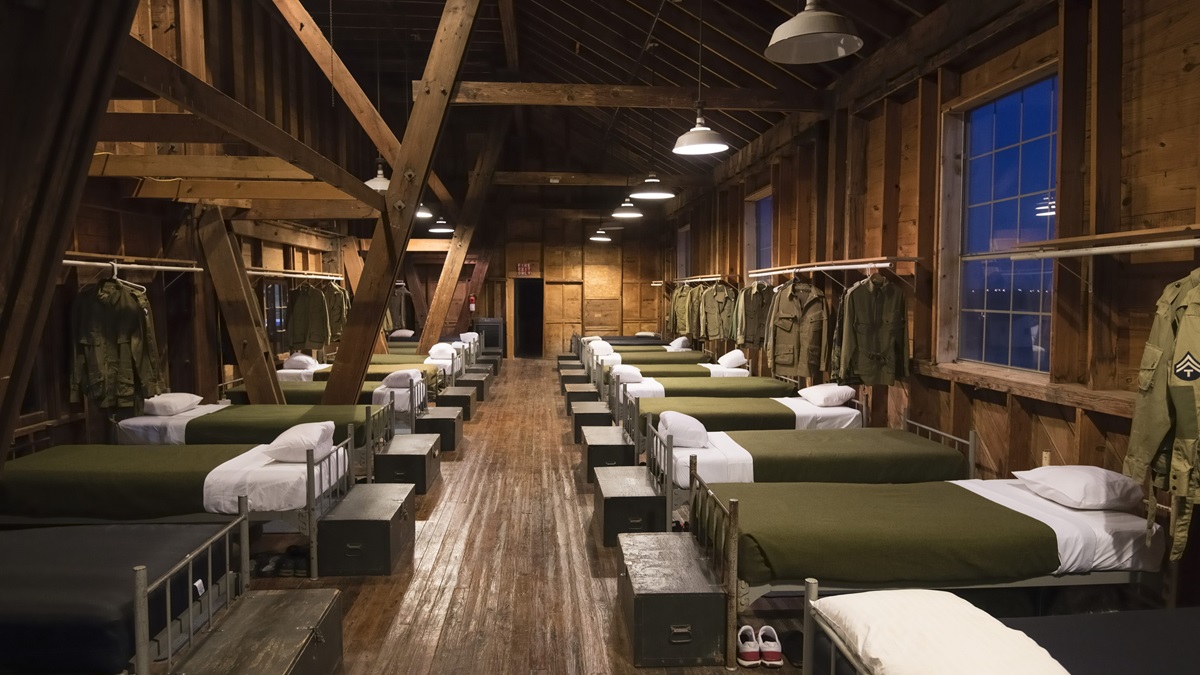
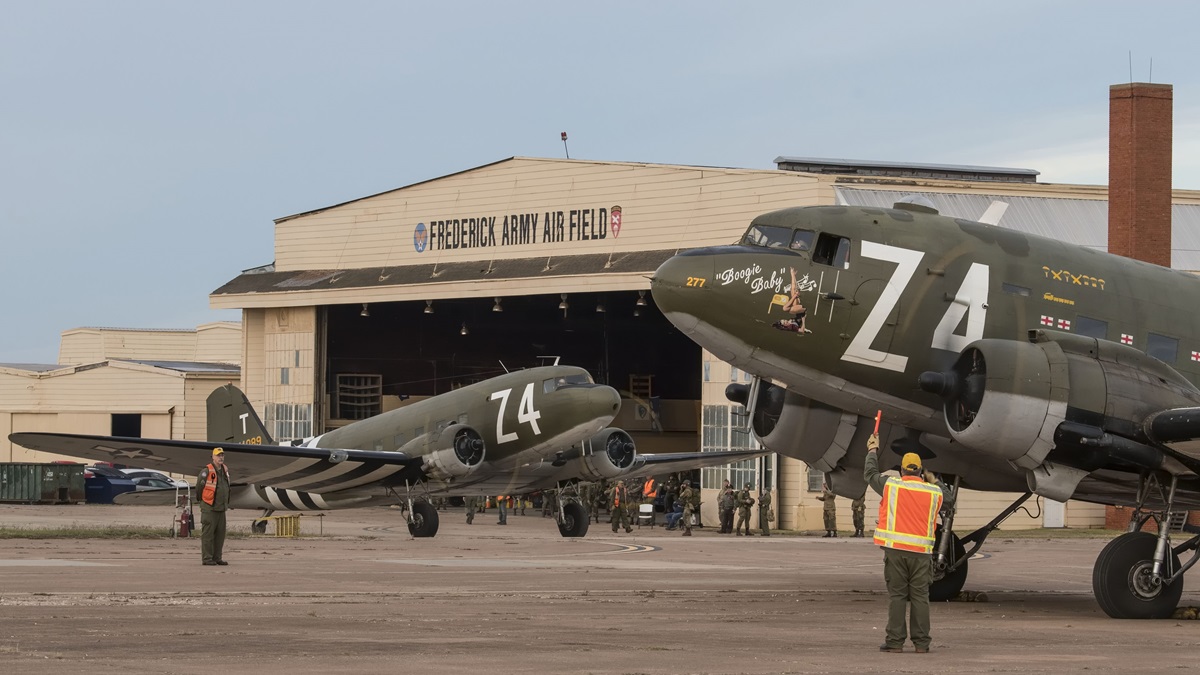
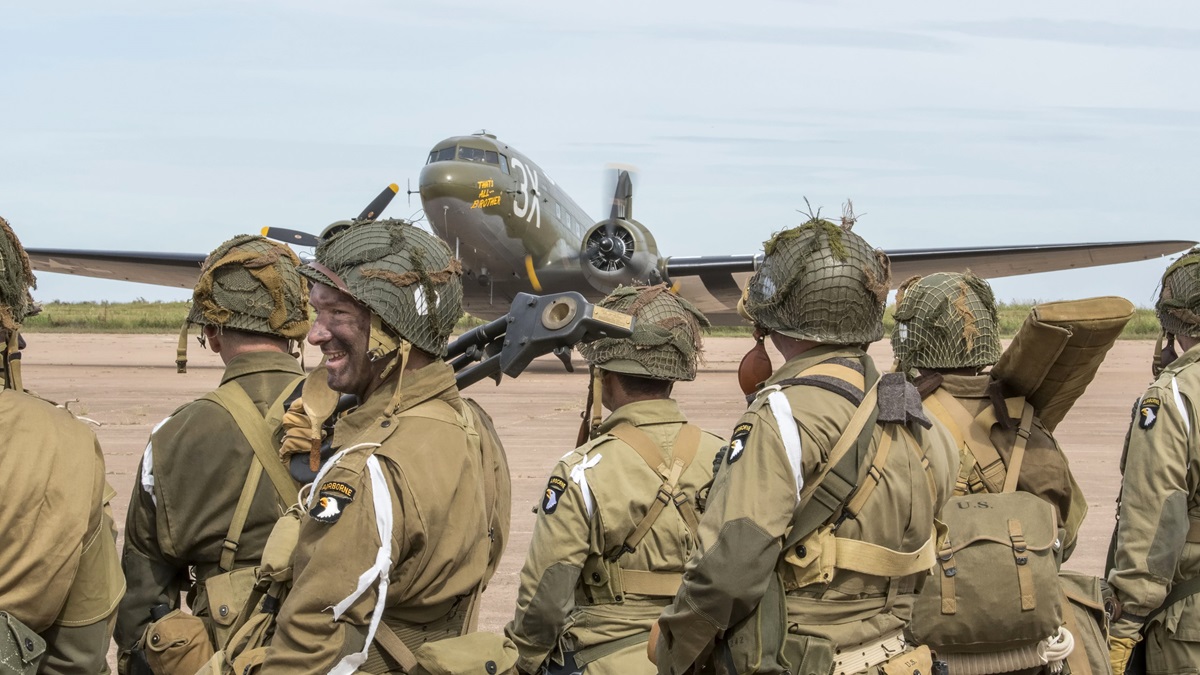
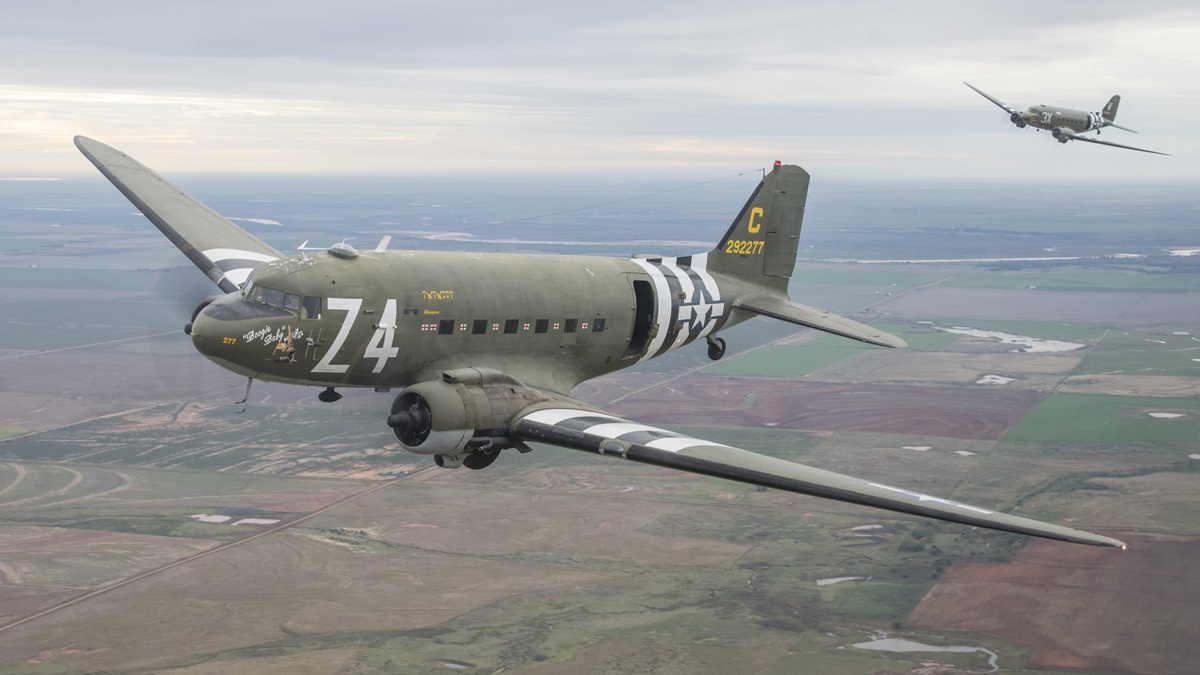
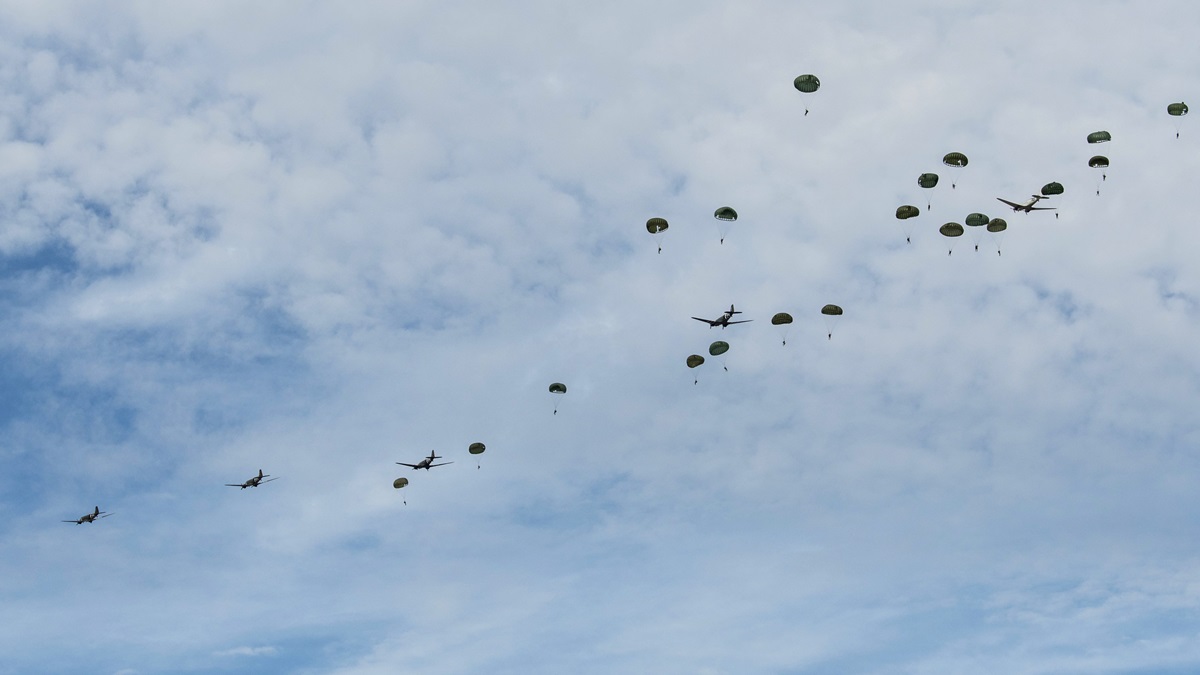
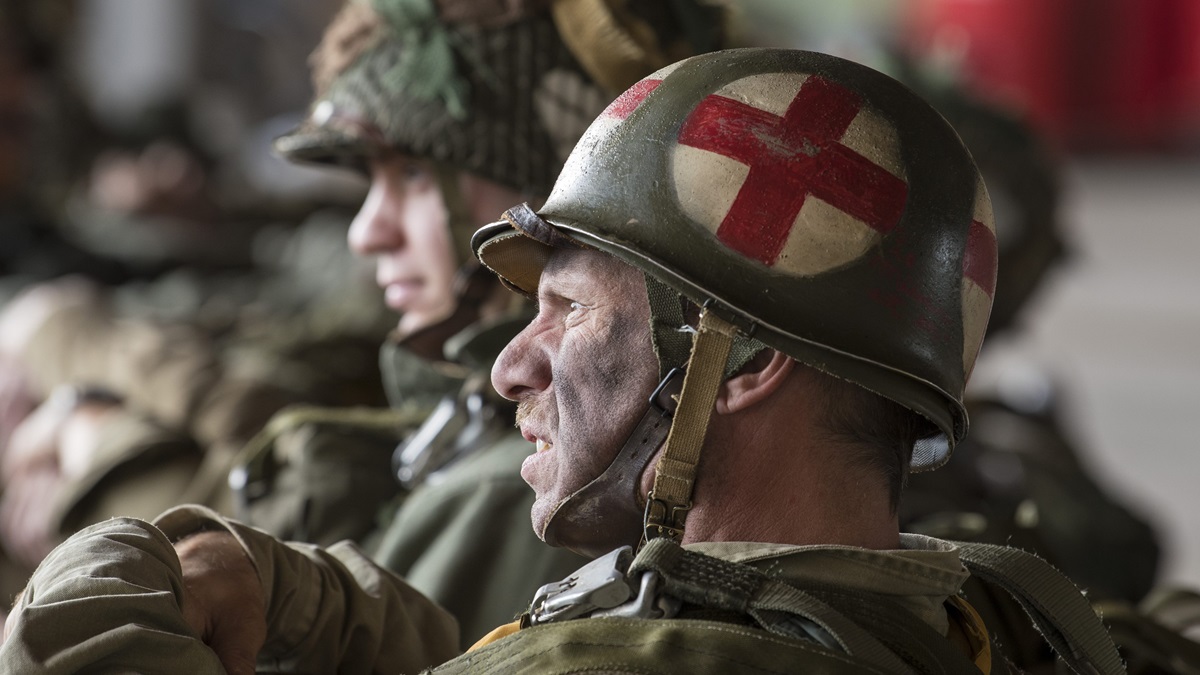
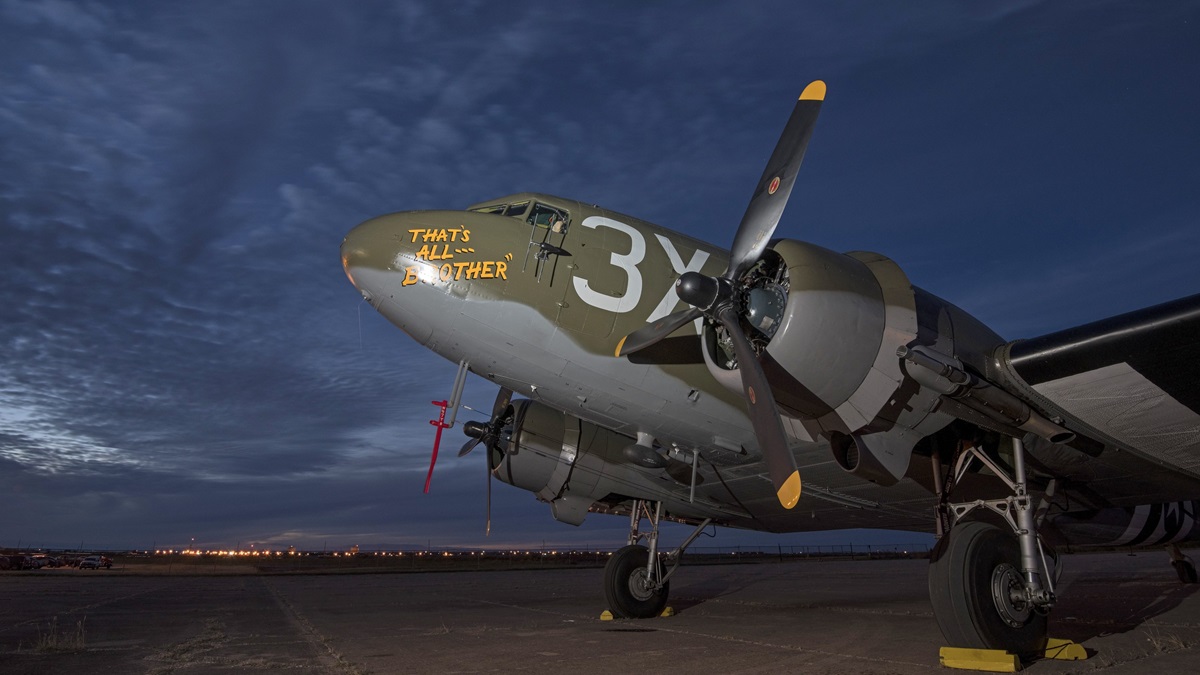
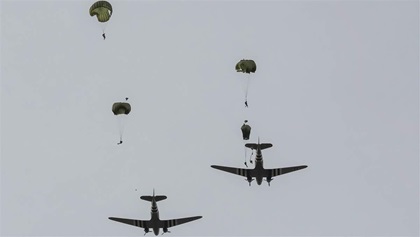 On June 6, 1944—D-Day—more than 13,000 paratroops were dropped by some 800 Douglas C–47s into Normandy, France. In June 2019, to commemorate the seventy-fifth anniversary of the historic event, 300 paratroopers are slated to jump from an anticipated 30 C–47s, including many flying from the United States.
On June 6, 1944—D-Day—more than 13,000 paratroops were dropped by some 800 Douglas C–47s into Normandy, France. In June 2019, to commemorate the seventy-fifth anniversary of the historic event, 300 paratroopers are slated to jump from an anticipated 30 C–47s, including many flying from the United States.